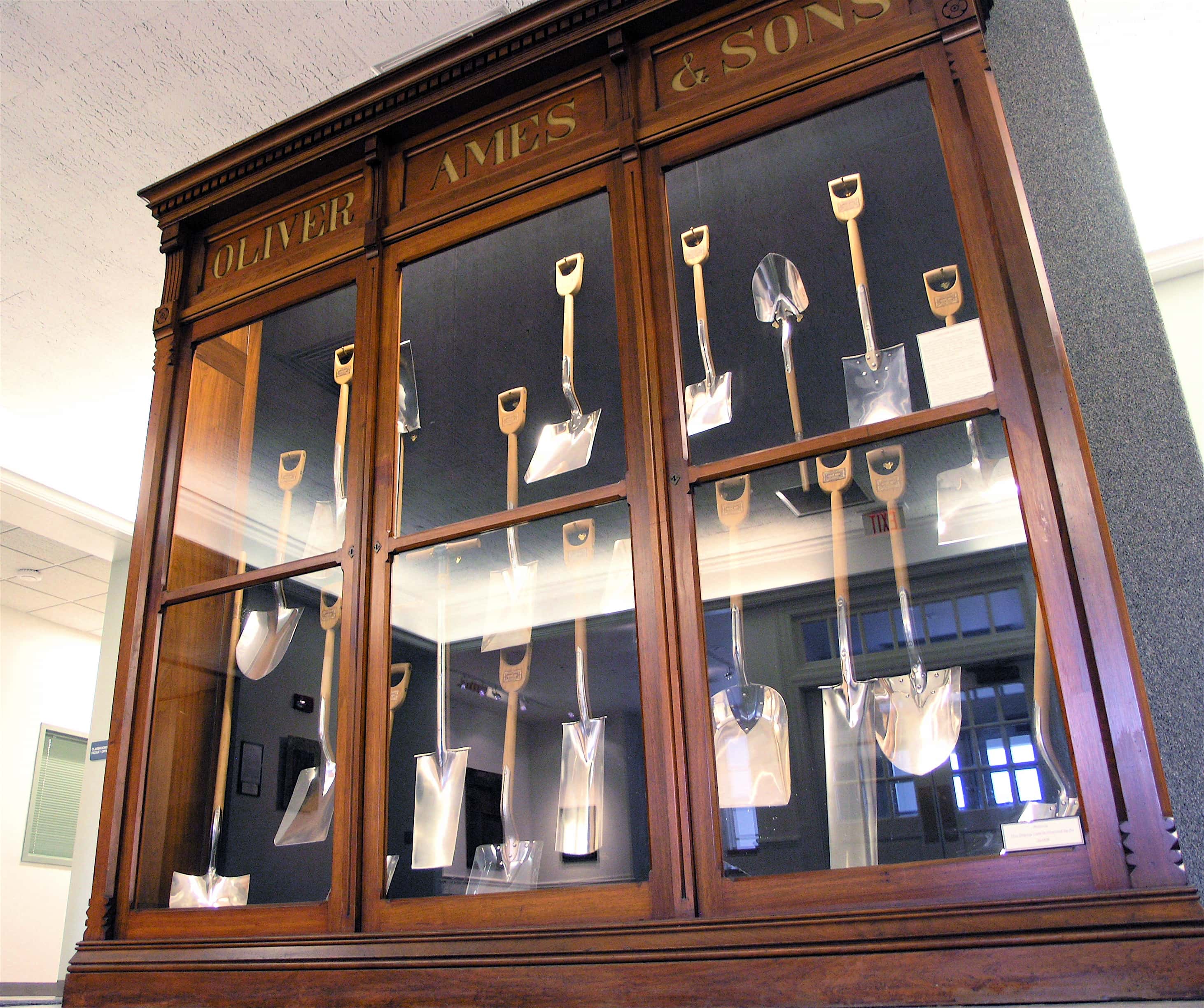Most travel guides simply call it the “shovel museum,” but it’s really the Stonehill Industrial History Center. Much more than shovels, curator Greg Galer tells us the collection reveals interesting facts about what we were building and how we built it over the past 200 years.
Located on the campus of Stonehill College in Easton Massachusetts, the collection does boast 755 shovels from the Ames manufacturing companies. From the FAQ:
By the 1870s Ames was the largest shovel manufacturer in the world, making three-fifths of the world’s shovels, although even as early as the 1830s and 1840s they struggled to meet the demand for their highly prized products. Ames shovels were the tool of choice in both the California and Australian gold rushes as well as in most major American building projects including the Erie and Panama Canals and most American railroad construction. Ames shovels literally built America.
Below is the Ames Centennial display of 19 silver-plated shovels as prepared for the 1876 Centennial Exhibition in Philadelphia. Amusingly, they’re displayed in the original display case. Inside the vault with the rest of the collection, Galer proudly points out not only the typical shovels we’re familiar with, but shovels designed for working coffee beans, 10-foot-long shovels used to dig telegraph pole holes, and tiny trenching shovels used by US troops in WWI and WWII.

Shovel Museum. Source.
But shovels are just a piece of the collection. Deeper in the vault are the business records, blueprints, patents and other materials that offer primary source documentation of America’s early growth into an industrial superpower.